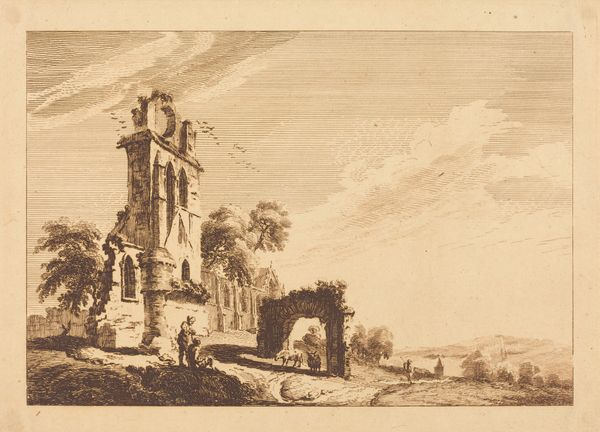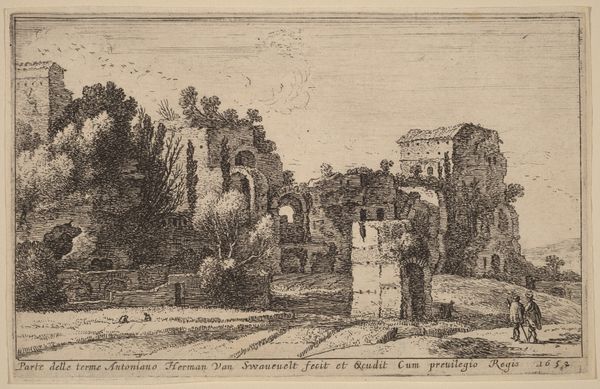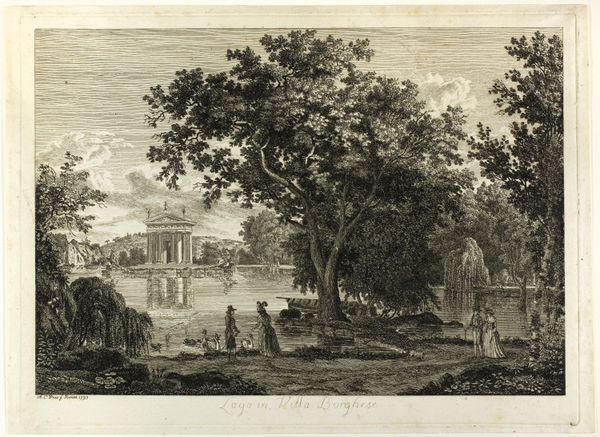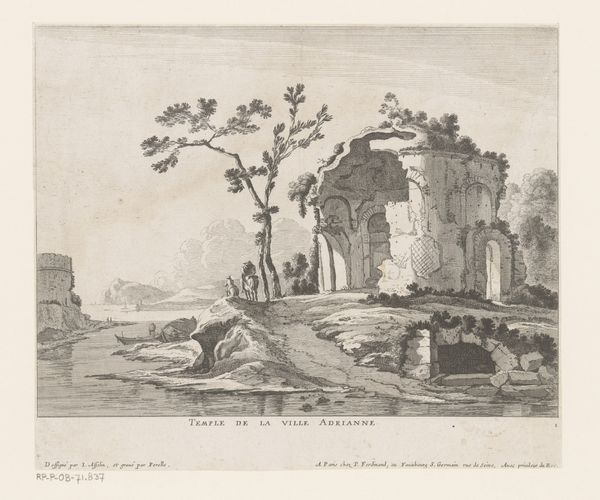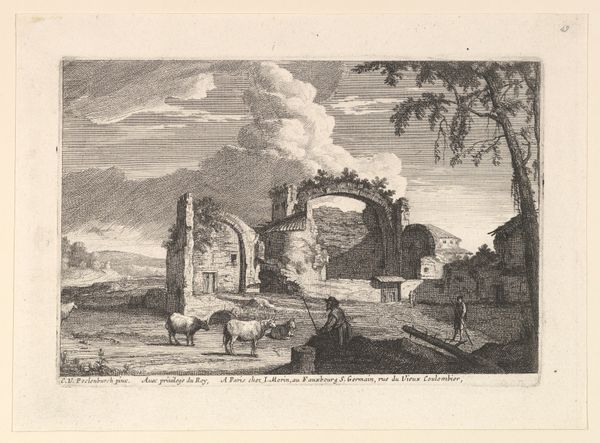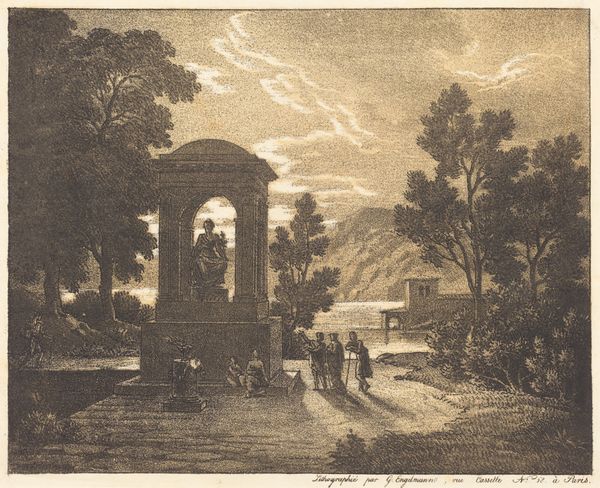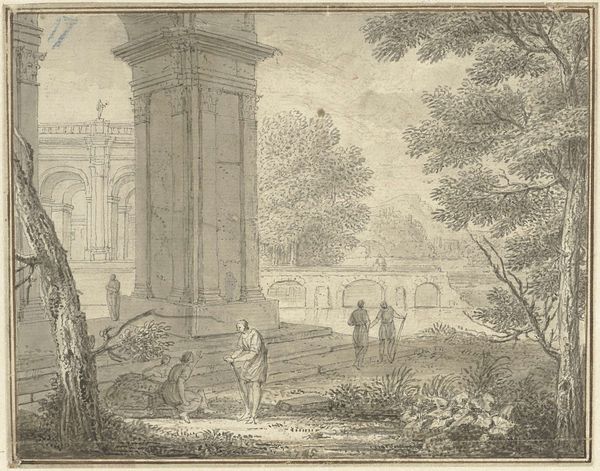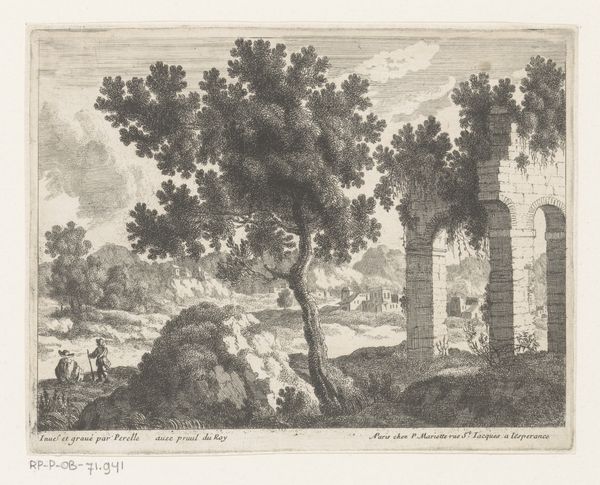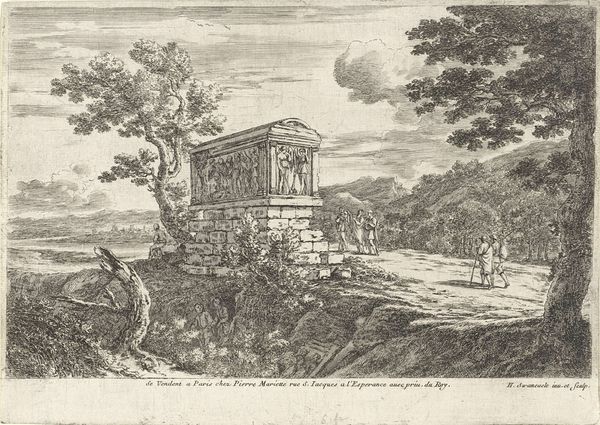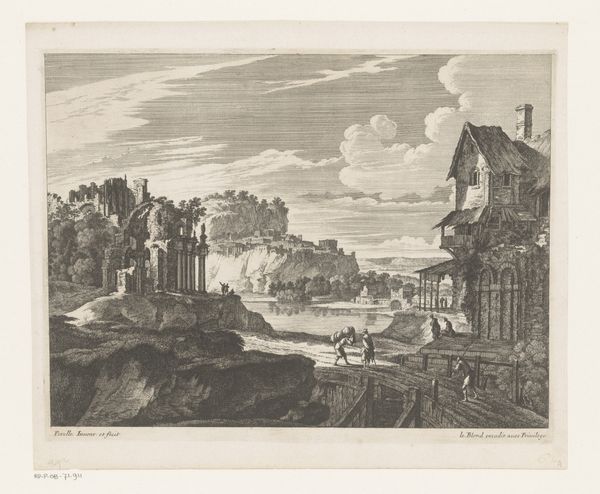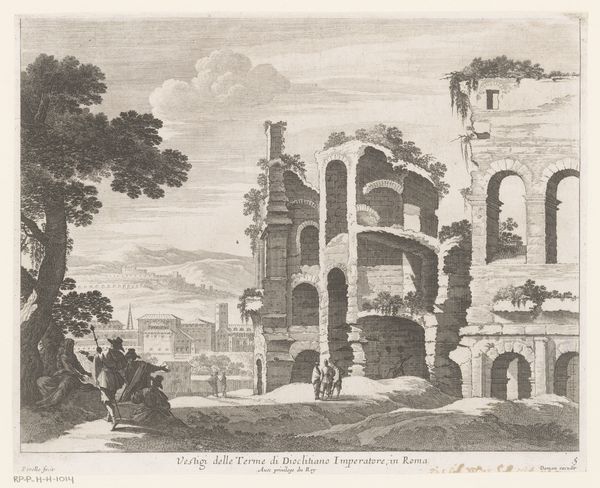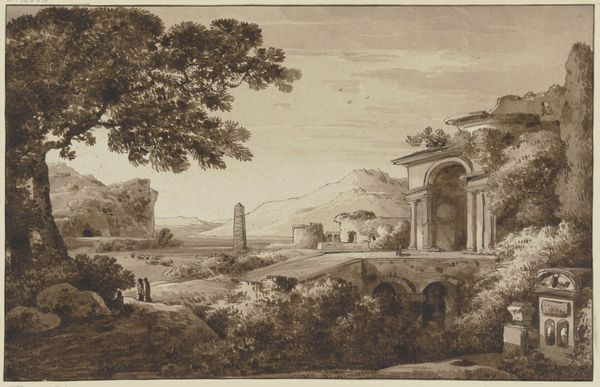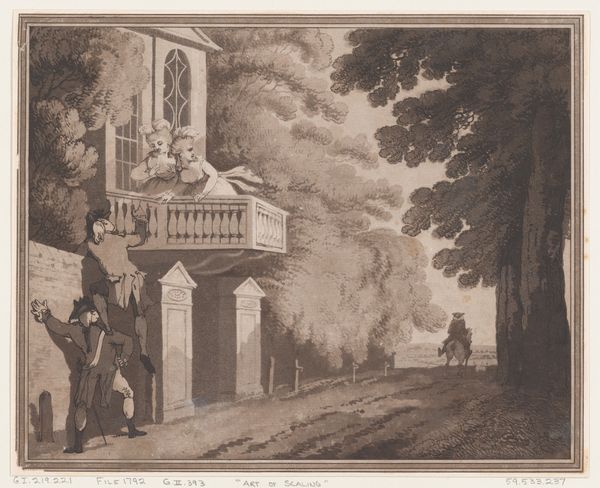
print, etching
#
baroque
# print
#
etching
#
landscape
Dimensions: sheet (trimmed to plate mark): 18.5 x 27.8 cm (7 5/16 x 10 15/16 in.)
Copyright: National Gallery of Art: CC0 1.0
Herman van Swanevelt etched The Grotto of the Nymph Egeria sometime in the mid-17th century. In it, we see the ruined temple and grotto of the mythic nymph, Egeria, just outside Rome. Let’s consider the image in the context of the artist’s life and times. Swanevelt was Dutch, but lived most of his life in Rome, at a time when it was fashionable for Northern European artists to spend time there, studying classical forms and absorbing the atmosphere of the picturesque campagna, the countryside surrounding the city. The ruined state of the temple is of particular interest; it is at once a symbol of a glorious classical past and a sign of its inevitable decline. The image is, on one level, a comment on the vanity of human wishes and the power of nature to erode even the grandest architecture. However, the figures in the foreground also evoke a sense of human community, suggesting the possibility of a new social order emerging from the ruins of the old. The historian's role is to understand the relationship between these different levels of meaning, using historical sources and art-historical expertise to bring the image to life.
Comments
No comments
Be the first to comment and join the conversation on the ultimate creative platform.
